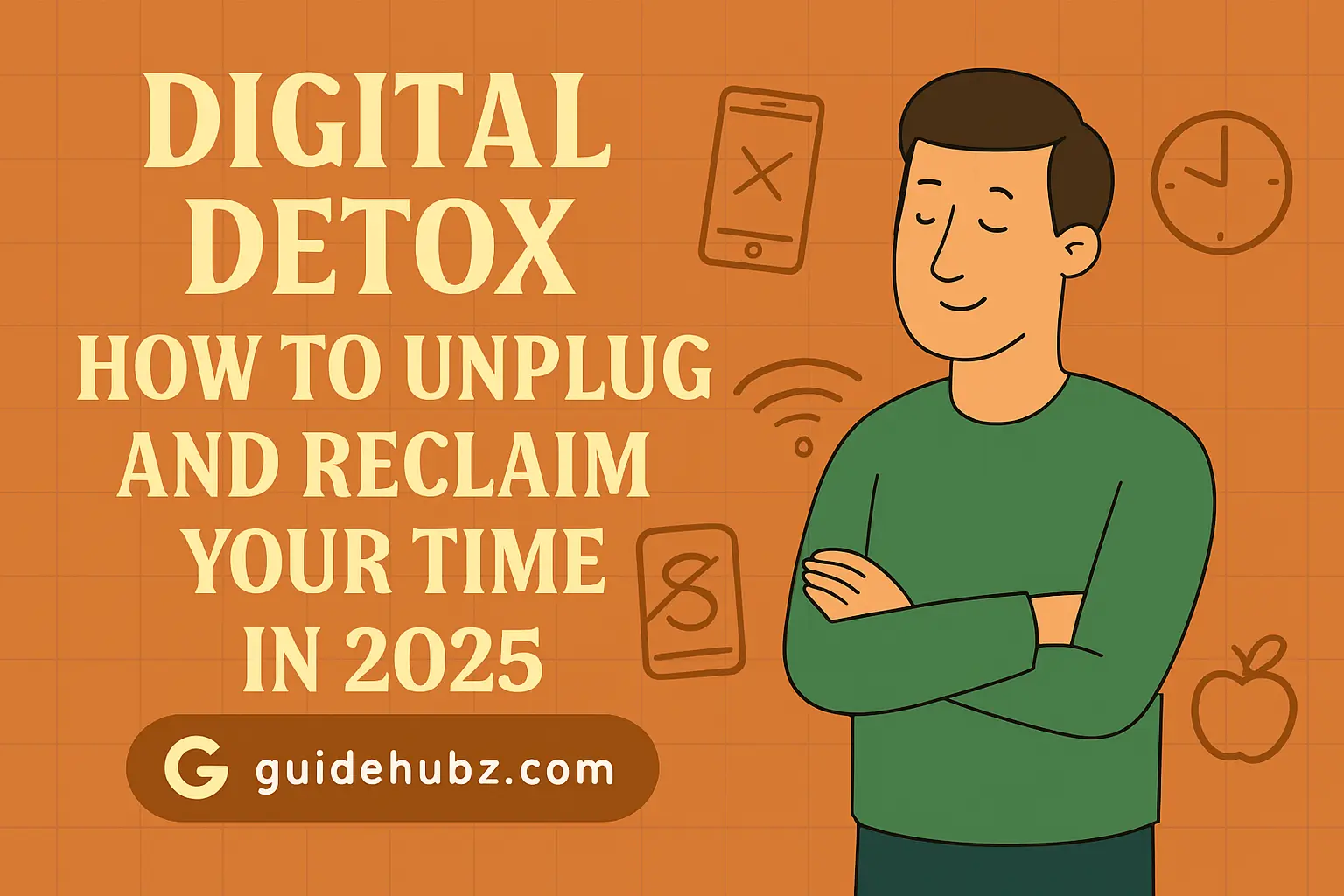In our hyperconnected world, the average person spends over 7 hours daily on screens - not including work time. This constant digital stimulation leads to anxiety, poor sleep, and fractured attention. A digital detox isn't about abandoning technology, but creating healthy boundaries that allow you to reclaim focus, presence, and time for what truly matters.
2025 Research: A recent Stanford study found that participants who completed a 30-day digital detox reported 58% lower stress levels, 42% better sleep quality, and 72% improvement in real-life relationships. Their productivity at work increased by an average of 31%.
The Signs You Need a Digital Detox
How do you know if you're due for some digital downtime? Watch for these warning signs:
Digital Addiction Red Flags
- Reaching for your phone first thing in the morning
- Checking devices during conversations or meals
- Anxiety when separated from your phone
- "Phantom vibration" syndrome (thinking your phone buzzed when it didn't)
- Difficulty concentrating on single tasks
- Using devices to avoid uncomfortable emotions or boredom
The 2025 Digital Detox Framework
These science-backed strategies help you gradually reduce screen time without feeling deprived:
1. The Gradual Reduction Method
- Week 1: Reduce non-essential screen time by 10% (about 45 mins)
- Week 2: Eliminate one social media platform (choose your least valuable)
- Week 3: Implement "no screens" before breakfast and after dinner
- Week 4: Designate one screen-free day per week
- Use built-in smartphone screen time trackers to monitor progress
2. Create Tech-Free Zones
- Bedroom: Charge devices outside the room
- Dining area: No devices during meals
- Bathroom: Yes, really - no phones allowed
- Use physical barriers like baskets to enforce boundaries
- Place books or journals in these areas as alternatives
3. The Notification Audit
- Turn off all non-essential notifications (keep only messaging and calendar)
- Batch-check emails/social media 2-3x daily instead of responding instantly
- Use "Do Not Disturb" mode during focus hours
- Set auto-responders to manage expectations
4. The Replacement Principle
- For every 30 mins of reduced screen time, add a positive activity:
- Reading physical books or magazines
- Outdoor exercise or walking
- Creative hobbies (drawing, playing music, cooking)
- Face-to-face socializing
- Journaling or meditation
5. Digital Sabbaticals
- Start with a 24-hour weekend detox (Friday evening to Saturday evening)
- Gradually work up to a 72-hour digital break quarterly
- Prepare by notifying important contacts
- Plan engaging offline activities in advance
- Notice how your mind and body feel without constant stimulation
2025 Digital Detox Tools & Apps
Ironically, these apps can help you disconnect more effectively:
| Tool | Purpose | Platform | Key Feature |
|---|---|---|---|
| Freedom | Block distracting apps/websites | All devices | Syncs across all your devices |
| OneSec | Break social media habits | iOS/Android | Adds friction before opening apps |
| Forest | Focus timer | iOS/Android | Grows virtual trees when you stay focused |
| Opal | Smart blocking | iOS | AI learns your focus patterns |
| Light Phone | Minimalist phone | Hardware | E-ink screen with only essential functions |
The Benefits You'll Experience
What can you expect from reducing your digital consumption?
Digital Detox Benefits Timeline
- 24 hours: Reduced anxiety, better sleep onset
- 3 days: Improved concentration, more present in conversations
- 1 week: More time for hobbies, increased creativity
- 2 weeks: Better posture, reduced eye strain, more energy
- 1 month: Sustained focus, deeper relationships, clearer priorities
Maintaining Digital Balance Long-Term
Make these practices part of your ongoing routine:
1. Weekly Digital Declutter
Unsubscribe from unused newsletters, delete unused apps, organize files, and clear browser tabs.
2. The 20-20-20 Rule
Every 20 minutes, look at something 20 feet away for 20 seconds to reduce eye strain.
3. Tech-Free Mornings
First 60-90 minutes of the day without screens establishes a calm, intentional tone.
4. Single-Tasking
When using devices, focus on one task at a time instead of constant tab/app switching.
5. Quarterly Digital Detox Retreats
2-3 day complete unplugging periods to reset your relationship with technology.
Success Story: "After implementing a digital detox, I regained 12 hours per week. I used that time to learn guitar, read 24 books last year, and deepen friendships. My work productivity increased so much that I earned a promotion while working fewer hours." - David T., Marketing Manager
Frequently Asked Questions
What about work requirements?
Set clear boundaries: no work apps on personal devices, defined "off" hours, and separate user accounts for work/personal use on computers. Use tools like Focusmate for accountability during work hours.
How do I handle social pressure to be always available?
Set expectations proactively: "I check messages twice daily" in your email signature. Most people will respect your boundaries when communicated clearly.
What if I relapse into old habits?
View it as practice, not perfection. Each day is a new opportunity. Identify triggers (boredom, stress) and create alternative responses (breathing exercises, going for a walk).




